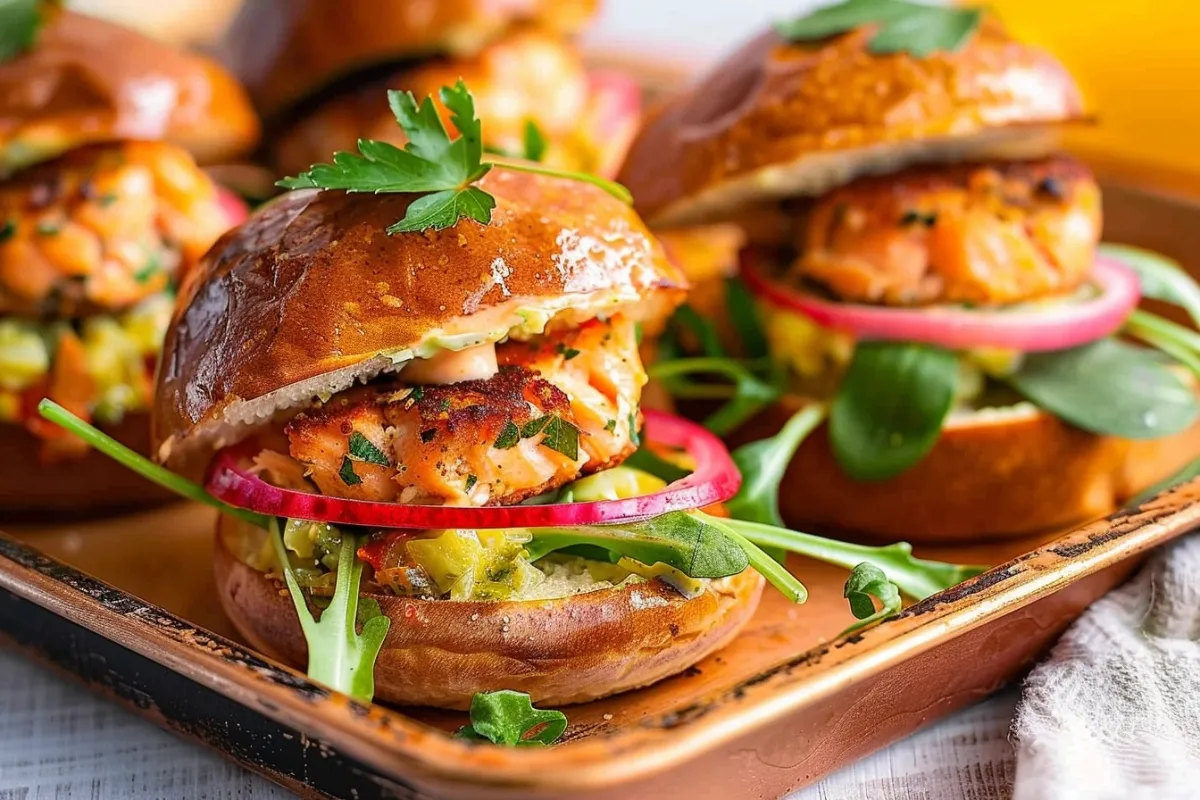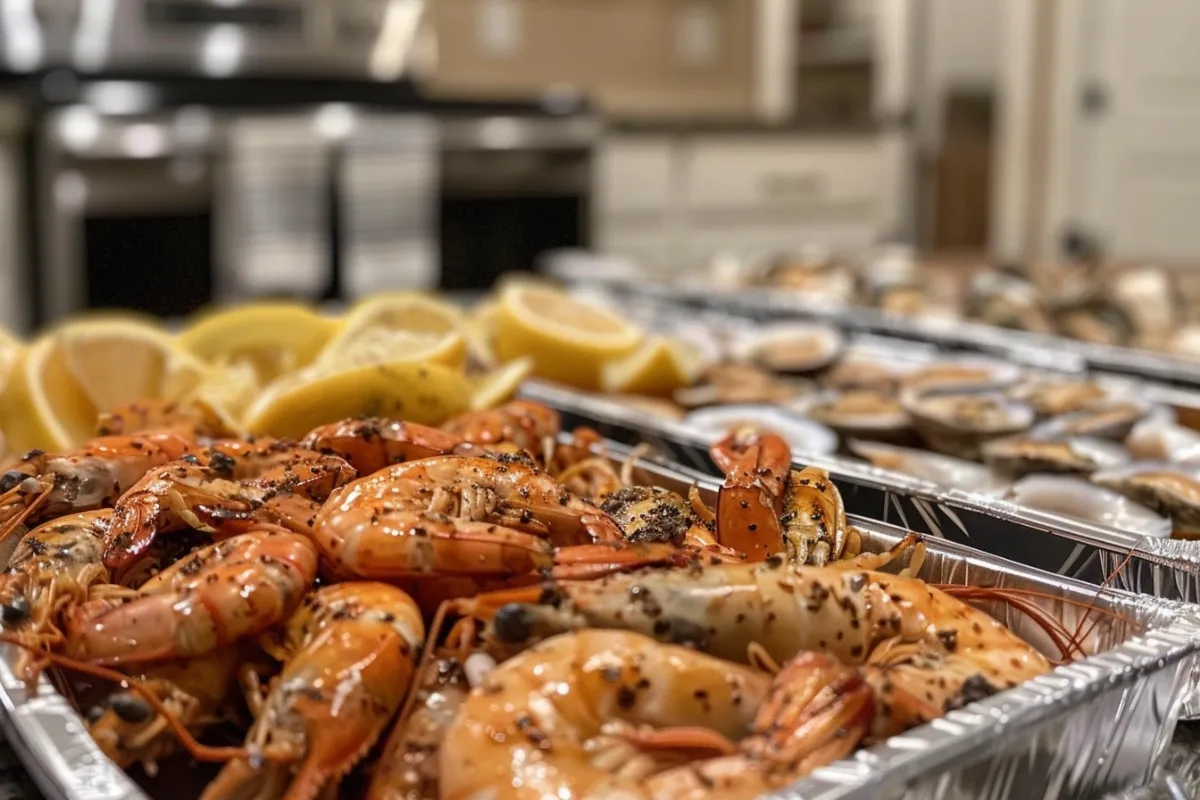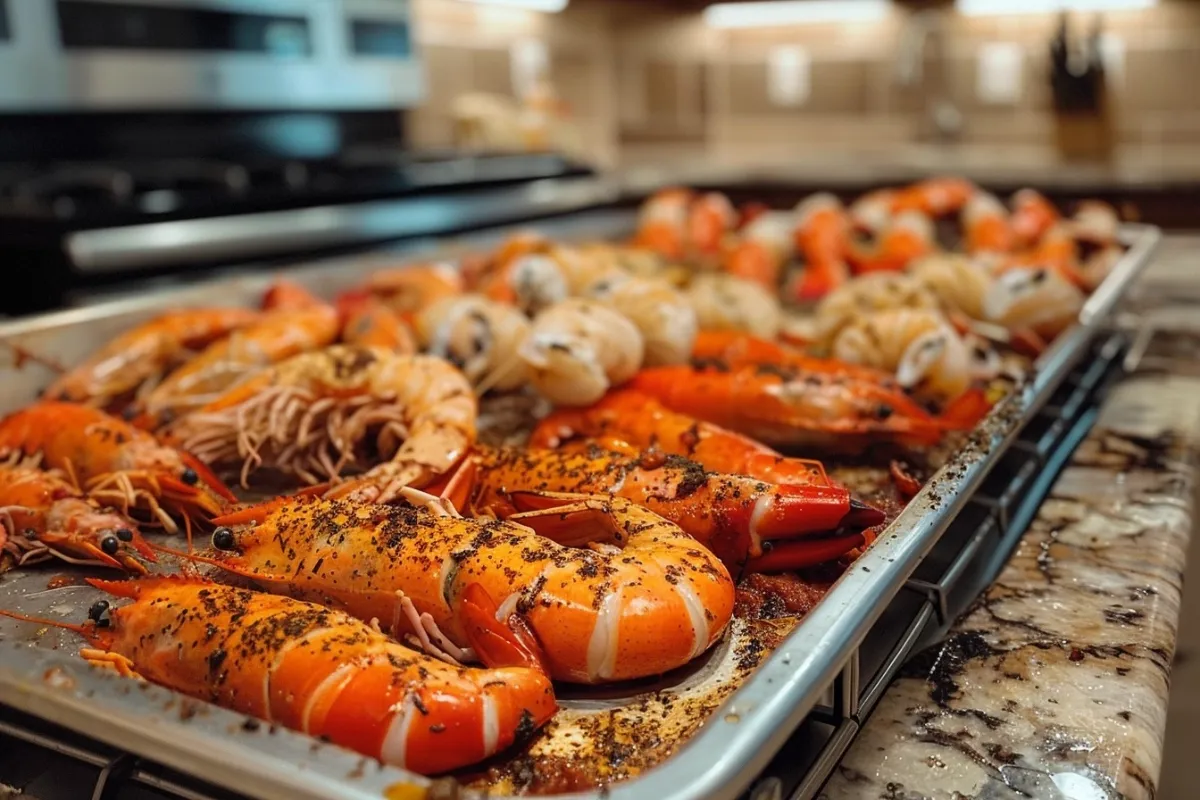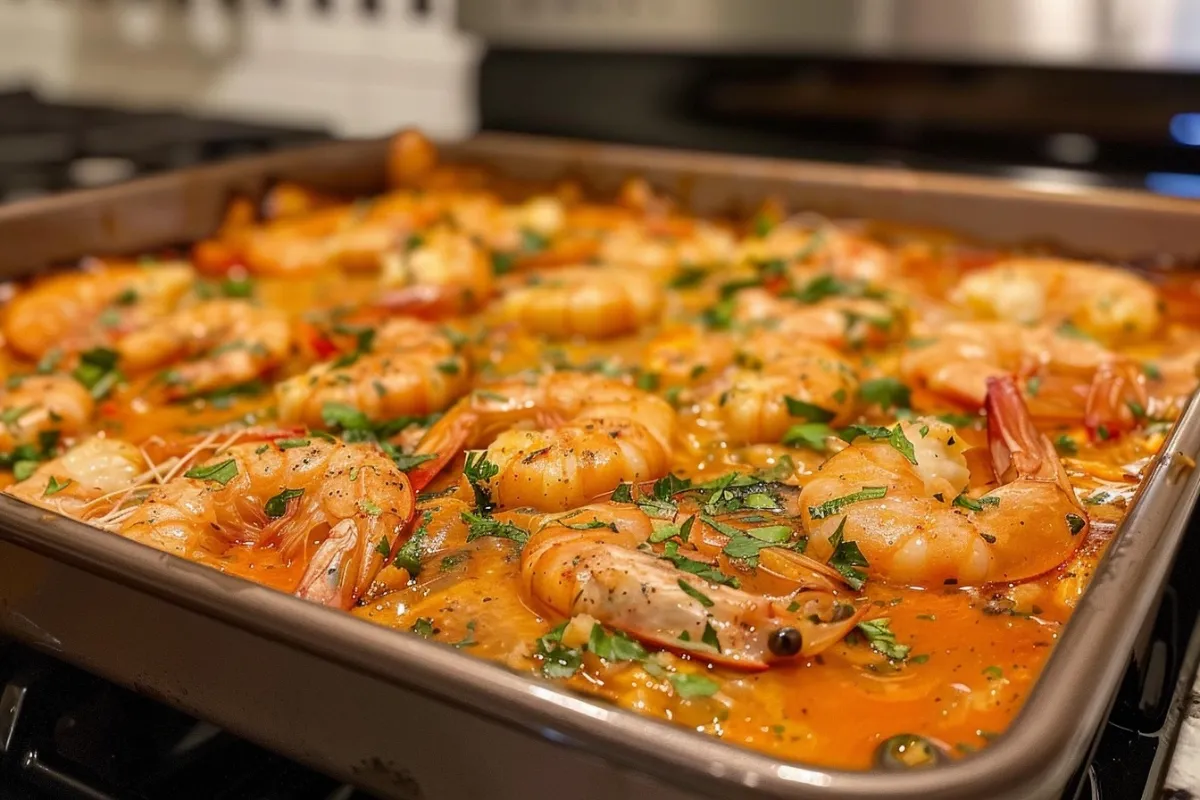Discover the bounty of the Gulf with our guide to Gulf Coast seafood. Learn about its variety, cooking, and safety.
Exploring the Flavors of the Gulf
The coastal seafood from the Gulf is famous for its freshness and flavor. Indeed, it is a culinary treasure. Consequently, it features a diverse array of species. Furthermore, these species range from delicate fish to succulent shellfish. Therefore, exploring the seafood from this region is a delicious journey. Additionally, its unique characteristics make it stand out from other regions. Specifically, the warm, nutrient-rich waters of the Gulf contribute to its exceptional taste. Consequently, this makes it highly sought after by chefs and home cooks alike.
Understanding the Variety of Gulf Seafood
Popular Types of Seafood
The Gulf offers many types of seafood. For example, shrimp is a well-known favorite. In addition, red snapper and grouper are popular fish. Moreover, oysters and crabs are also abundant. Therefore, understanding the variety is key to enjoying the seafood from this region. Furthermore, each type has its own unique flavor profile and texture. For instance, shrimp can be sweet and delicate, while grouper has a firmer texture and a mild, yet distinct, flavor. Consequently, this diversity allows for a wide range of culinary creations. The abundance of options makes the coastal seafood experience truly special.
Seasonal Availability of Gulf Seafood
Seafood from the Gulf is often seasonal. Because of that, certain species are best at specific times of the year. For instance, shrimp season is usually in the summer. Similarly, oyster season is typically during the cooler months. Consequently, knowing the seasons helps you get the freshest seafood. Moreover, this seasonal availability ensures that the seafood is at its peak flavor and quality. Indeed, it is important to be aware of these seasonal changes to truly appreciate the bounty of the Gulf. Therefore, planning your meals around the seasons can lead to the most delicious dining experiences. These seasonal shifts make the seafood experience dynamic.
Unique Characteristics of Gulf Seafood
Seafood from the Gulf has unique characteristics. Namely, the warm waters and rich ecosystems contribute to its flavor. Moreover, the abundance of natural food sources creates healthy, tasty seafood. Therefore, it is highly valued for its quality. Furthermore, the Gulf’s unique biodiversity also plays a role in the distinct taste of its seafood. Specifically, the mixture of freshwater and saltwater creates a unique environment that promotes the growth of many delicious species. Consequently, these factors combine to make the seafood from this area stand out. The exceptional nature of coastal seafood is undeniable.
Cooking Techniques for Gulf Seafood
Grilling and Frying Seafood
Grilling enhances the natural flavors of coastal seafood. Accordingly, it’s a healthy and delicious option. Frying, on the other hand, creates crispy textures. In addition, it is a popular way to prepare seafood. Therefore, these are two common cooking methods. Specifically, grilling is ideal for leaner fish such as snapper and grouper. Conversely, frying is often used for smaller seafood like shrimp and oysters. Hence, choose your cooking method based on the type of seafood you are preparing. Understanding these techniques allows you to fully appreciate the flavors.
Baking and Broiling Seafood
Baking is a gentle cooking method. Because of that, it preserves the moisture of the fish. Broiling, on the other hand, uses high heat. Furthermore, it creates a nice char on the outside. Consequently, both methods are great for cooking seafood. Moreover, baking is a great method for cooking thicker fish fillets and whole fish. Additionally, broiling works well for thinner cuts of fish and shellfish. Thus, understanding these nuances will help you achieve the best results. Indeed, both techniques are versatile and easy.
Steaming and Boiling Seafood
Steaming is ideal for delicate shellfish. Indeed, it retains their natural flavors. Boiling is a traditional way to prepare seafood, especially crabs and shrimp. Moreover, both are simple and efficient ways to cook seafood. Specifically, steaming is excellent for preserving the delicate textures of shellfish like mussels and clams. Conversely, boiling is a perfect method for preparing larger shellfish such as crabs and lobsters. Therefore, these methods provide a range of options for cooking seafood from the Gulf.
Health Benefits of Gulf Seafood
Nutritional Value of Seafood
Seafood from the Gulf is packed with nutrients. Namely, it’s a good source of protein and omega-3 fatty acids. In addition, it also provides various vitamins and minerals. Therefore, incorporating seafood from this area into your diet can be beneficial. Furthermore, its high protein content makes it excellent for muscle building and satiety. Also, the omega-3s contribute to a variety of health benefits, and the vitamins and minerals support overall well-being. Accordingly, choosing coastal seafood is a smart way to nourish your body.
Heart-Healthy Benefits of Seafood
Omega-3 fatty acids are known for their heart-healthy properties. Because of that, seafood can help lower the risk of heart disease. Furthermore, it can improve cholesterol levels. Therefore, seafood is a great choice for heart health. Specifically, these omega-3s have anti-inflammatory properties and help maintain healthy blood pressure. Consequently, this makes incorporating seafood into your diet a proactive step towards cardiovascular well-being. Indeed, its benefits extend beyond simply being a tasty food choice.
Brain Health and Seafood
Omega-3s also play an important role in brain health. Specifically, they support cognitive function and may prevent cognitive decline. Therefore, regular consumption of seafood may benefit brain health. Additionally, this makes it a smart dietary choice. Specifically, omega-3s are vital for the structural integrity of brain cells. Consequently, including seafood in your diet may help improve memory and concentration. Indeed, the benefits of seafood extend to cognitive health. Enjoying coastal seafood can support a healthy brain.
Sourcing and Selecting Seafood
Buying Fresh Seafood
When buying fresh seafood, look for specific indicators. Namely, the fish should have clear eyes and bright gills. Additionally, the flesh should be firm and have a mild smell. Therefore, choosing fresh seafood ensures the best taste. Furthermore, purchasing from a reputable fishmonger or market can make a significant difference. Also, consider asking about the origin and catch date of the seafood to ensure its freshness. Consequently, these simple tips can help you select the best quality options.
Understanding Sustainable Seafood
Choosing sustainably sourced seafood is important. Accordingly, it helps protect marine life and the environment. Furthermore, supporting responsible fishing practices ensures the long-term availability of seafood. Indeed, sustainable practices protect the delicate ecosystems of the Gulf. Also, look for certifications that indicate responsible fishing methods. Consequently, this not only protects the environment but also supports local economies. Preserving the abundance of coastal seafood is a responsibility we all share.
Recognizing Spoiled Seafood
Avoid seafood that smells fishy or has a slimy texture. Because of that, it is not fresh. Also, look out for dull eyes or discolored flesh. Moreover, always be cautious when purchasing seafood. Consequently, this helps to avoid any health risks. Specifically, the presence of a strong, ammonia-like odor is a key indicator of spoilage. Therefore, relying on your senses is important when selecting seafood. If something looks or smells questionable, it’s always better to err on the side of caution.

Seafood and Culture
The Importance of Seafood to the Region
Seafood is deeply rooted in the region’s culture. Namely, it is a vital part of the local economy. In addition, it supports many fishing communities. Furthermore, traditions and recipes have been passed down through generations. Therefore, seafood is more than just food; it’s a way of life. Indeed, its history is intertwined with the stories of the people who live and work along the coast. Consequently, preserving these traditions is essential for future generations. The cultural significance of coastal seafood cannot be overstated.
Seafood Festivals and Events
Many festivals celebrate the bounty of the Gulf. Specifically, these events showcase local seafood and culinary traditions. Additionally, they often include cooking competitions and live music. Therefore, these festivals are a great way to experience the culture. Furthermore, these events are a great way to learn about the unique heritage of the region. Also, they offer a great opportunity to try a wide variety of dishes. Consequently, they can offer a fun and immersive experience. These festivals are a perfect showcase for coastal seafood.
The Influence of Seafood on Cuisine
Seafood has greatly influenced the region’s cuisine. Namely, it’s a staple ingredient in many traditional dishes. Moreover, it has shaped local culinary styles. Indeed, the unique flavors of the seafood are prominent in many recipes. Specifically, from spicy Cajun dishes to light and refreshing salads, seafood is a versatile ingredient. Consequently, its influence can be seen in many classic regional favorites. Therefore, it plays a central role in the culinary identity of the Gulf Coast.
Seafood Recipes
Classic Shrimp Boil with Coastal Seafood
A shrimp boil is a traditional coastal dish. Indeed, it features shrimp, corn, and potatoes, all boiled with spices. Furthermore, it’s perfect for a gathering. Moreover, this is a delicious and easy way to enjoy seafood. Specifically, the blend of spices, often including Old Bay seasoning, is a key element. Also, the communal aspect of a shrimp boil makes it perfect for social occasions. Therefore, it’s not just a meal; it’s an experience. This is a great way to enjoy fresh seafood.
Grilled Red Snapper with Coastal Flavors
Grilled red snapper is another classic. Specifically, the fish is simply seasoned and grilled to perfection. Additionally, it is often served with lemon and herbs. Therefore, it is a healthy and delicious way to enjoy seafood. Specifically, the simplicity of the recipe allows the natural flavors of the fish to shine through. Consequently, it’s a great example of how to prepare seafood using minimal ingredients. This recipe is a testament to the quality of the coastal seafood.
Coastal Seafood Gumbo: A Hearty Stew
Seafood gumbo is a hearty and flavorful stew. Indeed, it includes various types of seafood, vegetables, and spices. Furthermore, it is a traditional comfort food. Moreover, it’s perfect for a cold day or a special occasion. Specifically, the use of a dark roux, along with traditional Creole spices, is essential for the deep flavor of the gumbo. Consequently, it’s a perfect showcase of the rich culinary heritage of the Gulf Coast. This hearty stew is a classic dish featuring seafood.
Seafood: Frequently Asked Questions
What seafood is the Gulf known for?
The Gulf is known for its shrimp, red snapper, grouper, oysters, and crabs. Indeed, these are just some of the popular seafood choices. Moreover, their availability is largely dependent on the seasons. Specifically, each type of seafood brings a unique flavor to the table. Therefore, the variety is one of its most appealing qualities.
Is seafood from the Gulf OK to eat?
Generally, seafood from the Gulf is safe to eat. However, it’s important to be aware of advisories. Additionally, you should only buy seafood from reputable sources. Specifically, staying informed about any health alerts and purchasing from trusted vendors helps you ensure its safety. Consequently, exercising due diligence is key when consuming seafood.
What fish are in the Gulf?
The Gulf is home to many types of fish. These include red snapper, grouper, tuna, and mahi-mahi. Therefore, there’s a wide variety to choose from for your culinary adventures. Furthermore, each fish has its own unique characteristics. Hence, this adds to the diversity of the Gulf’s culinary landscape. Consequently, exploring these various types of fish can be a rewarding experience.
What is the best day to buy seafood?
The best day to buy seafood is usually when the fish markets receive new shipments. Specifically, this is often early in the morning. However, it can vary depending on location. Therefore, asking your fishmonger is always a good idea. Specifically, this can ensure that you are getting the freshest possible seafood. Consequently, forming a relationship with your fishmonger can provide valuable insights and tips.
Conclusion: Savoring the Delights of the Gulf
The Gulf offers an incredible variety of seafood. Indeed, its fresh flavors and health benefits make it a culinary gem. Consequently, by understanding its diversity and cooking methods, you can fully enjoy seafood. Furthermore, by choosing wisely and supporting sustainability, you can ensure it continues to be a treasure for generations. Seafood from the Gulf is a delicious and nutritious bounty. Moreover, exploring its rich culinary heritage offers a rewarding journey. Therefore, savor each bite and appreciate the unique flavors. The experience of coastal seafood is truly something special.


